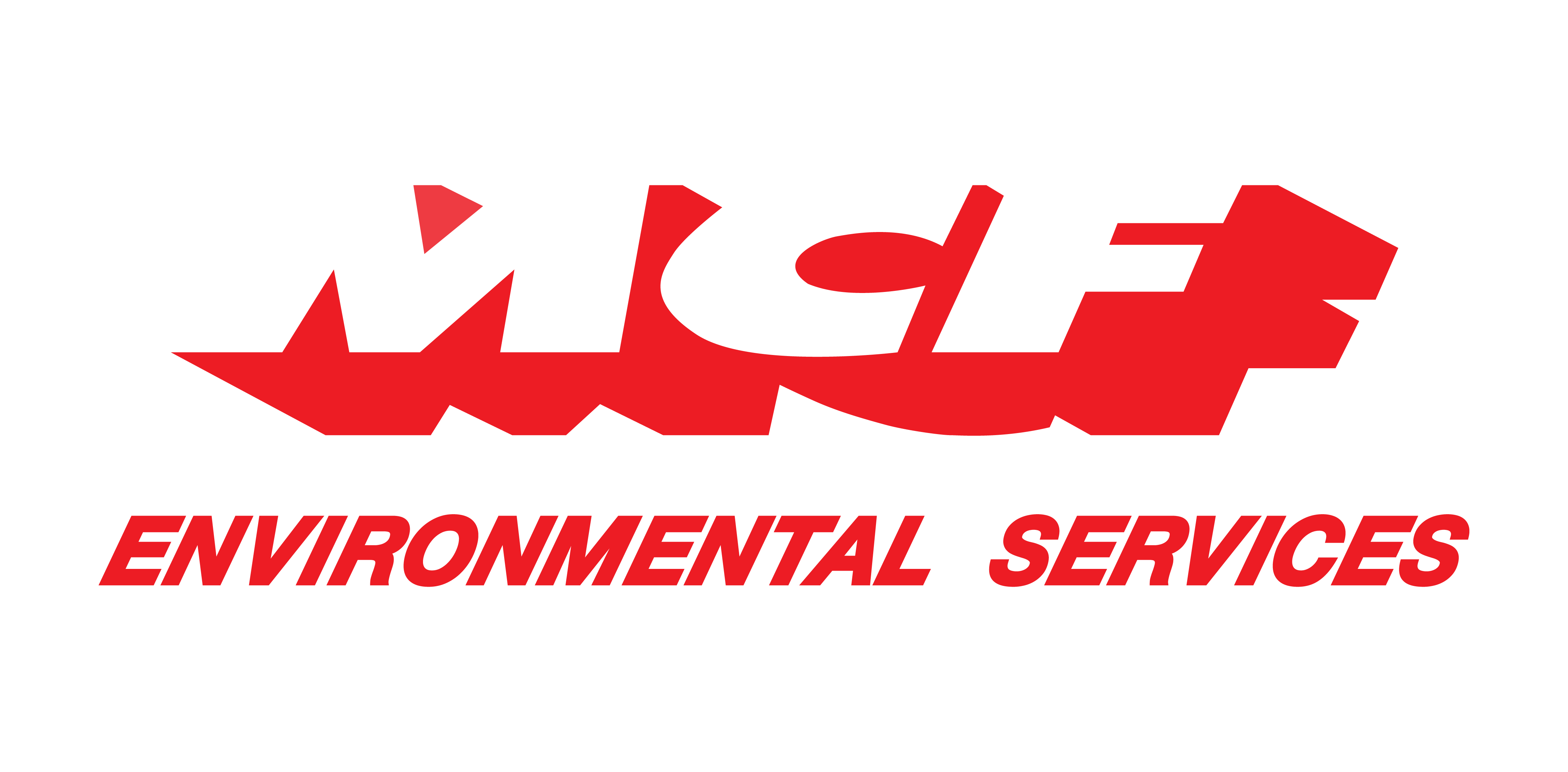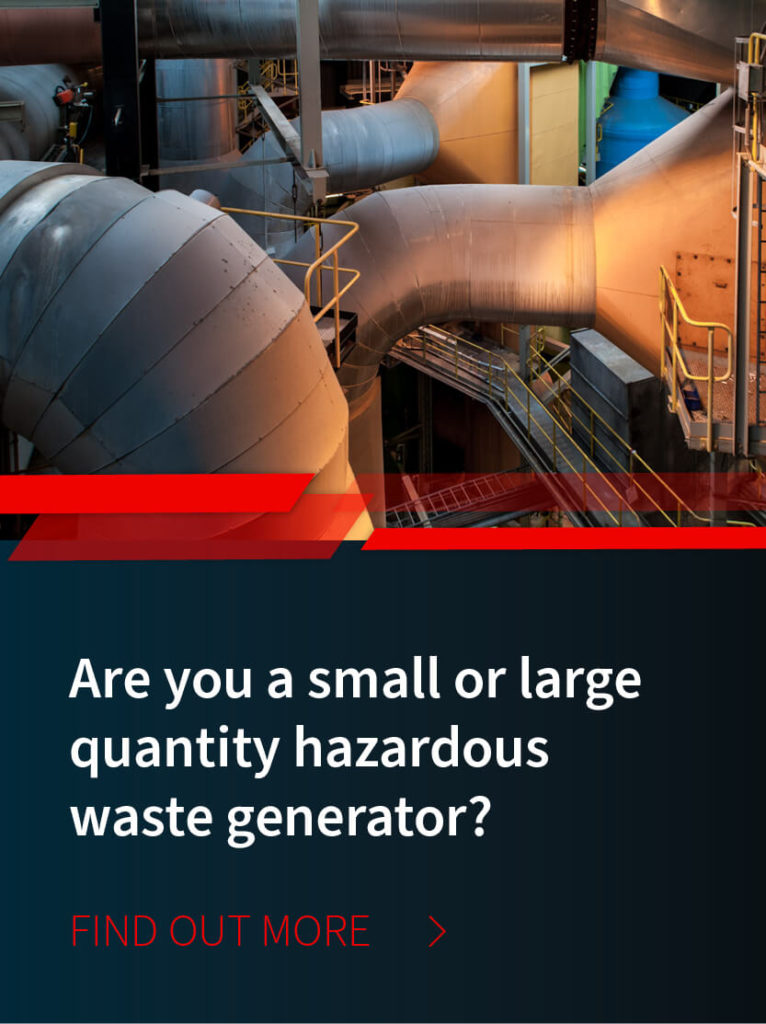
/ IN THIS BLOG
There are many steps required to legally and safely transport hazardous waste as well as any variety of non-hazardous waste. One of the most crucial steps in that process is properly filling out a waste profile. What exactly is this form, though, and why is it so important to this process of both hazardous and non-hazardous waste disposal?
The state of Georgia follows the recommendations and guidelines of the federal government when it comes to environmental protection and medical waste management. As such, compliance is key for any facility that provides medical or healthcare services that also generates hazardous waste.
Proper identification, handling, storage and transportation of medical waste streams is vital for compliance as well as safety. Knowing the difference between hazardous and non-hazardous waste and their profiles is the first step toward compliant healthcare waste disposal.
As such, properly filling out a waste profile is a first step for identification of hazardous or non-hazardous waste streams.
01 / What is a hazardous waste/ non-hazardous waste profile?
The hazardous/non-hazardous waste form lists chemical properties of particular types of waste. In the past, this form was called a waste characterization profile. Among the most important parts of such a profile is the identification of hazardous waste generated at the site before it is transported off-site for treatment or disposal.
A non-hazardous waste profile lists other waste streams generated at the facility or location that are not hazardous.
Your first step is to properly identify hazardous and non-hazardous waste streams generated at your facility. The rules and regulations of the state of Georgia provide detailed information regarding hazardous waste management, found under Subject 391-3-11-.01.
Georgia’s Hazardous Waste Management Act oversees hazardous waste regulations in regard to generation, transportation, storage, treatment, and disposal. Regulations are also managed by the Hazardous Waste Management Programs of the Land Protection Division.
The state of Georgia adopts federal guidelines in regard to hazardous waste management. Federal guidelines are found in Title 40 of the Code of Federal Regulations. Pay special attention to Parts (§) 260 and 261 of Title 40 CFR for identification and listings of hazardous waste.
The state of Georgia adopts the Environmental Protection Agency (EPA) definition of hazardous waste as exhibiting the characteristics of ignitability, corrosivity, reactivity, and toxicity. Subpart D of Title 40 CFR § 261 specifically mentions lists of hazardous wastes. Hazardous wastes are assigned EPA hazardous waste numbers. These numbers must be used in documents and be in compliance with notification requirements for record-keeping and reporting.
Non-hazardous waste includes wastes that don’t have those characteristics. Medical waste generators are urged to keep records of their processes to support hazardous and non-hazardous waste determinations.
02 / Is the hazardous waste profile necessary?
Yes! Whenever you transport hazardous waste or non-hazardous waste, a profile absolutely must be completed.
Georgia Rule 391-3-11-.04 (Notification of hazardous waste, hazardous secondary material, and used oil activities) specifies that: “Every hazardous waste generator, hazardous waste transporter… storage, treatment, or disposal facility shall notify the division of such activities on forms provided by the director. Very small quantity generators are not required to notify.”
Rule 391-3-11-.07 provides information regarding the identification and listing of hazardous waste.
Georgia’s Environmental Protection Division offers resources and links that includes:
EPA guidance regarding specific waste regulations, hazardous waste program areas, and the cradle-to-grave approach for waste management. This means that it is the ultimate responsibility of the waste generator to ensure that all waste is properly identified from its point of origin to its ultimate disposal. This responsibility also includes hazardous waste management, along with its transportation, treatment, and disposal. Your responsibility doesn’t end when the transport company picks up that waste. It is your responsibility to ensure that it is properly disposed of.
A hazardous waste management guide for Georgia hospitals covering basic guidance for the rules of Georgia’s hazardous waste management, which in turn follows the EPA’s Resource Conservation and Recovery Act (RCRA) regulations.
In order for a treatment storage and disposal facility (also sometimes referred to as a TSD facility) to even accept a shipment, it must receive proper paperwork in advance.
This applies to both a non-hazardous waste profile and a hazardous waste profile. That is, regardless of the type of waste, the receiving facility needs to know beforehand what it is accepting – and whether proper permits to do so are in place.
03 / Whose responsibility is it to create a hazardous/ non-hazardous waste profile?
As the generator of the waste, it’s your responsibility to fill out and complete necessary forms prior to shipment. Such documents also require a signature to confirm that what you’re shipping is accurately reflected on that form. Choosing to work with a reputable hazardous waste management company with experience in hazardous and non-hazardous waste disposal such as MCF Environmental Services provides a number of benefits.
It is vital that you accurately complete necessary forms prior to shipment of waste off-site for treatment and/or disposal. Maintain compliance and reduce risk of fines or penalties by accurately completing such forms.
What’s on the Form?
The form details specifics about the waste, such as:
Chemical composition
Is it a liquid, sludge, or solid
Does it have any discernible odor?
Its DOT description.
Its flash point (if relevant).
Other information on the form includes:
What type of container the waste will be shipped in, whether that means a cubic yard box, any size containers, or a thirty-gallon drum.
How the waste was created. (Is it paint that was used and then spilled? Is it a waste steam that has passed its life expectancy? Is it a hazardous medical waste?)
What Else Is Required?
In addition to the profile, a safety data sheet (SDS) is required. Also, remember that a hazardous waste manifest is required whenever shipping hazardous waste.
04 / Why does the TSD facility need this form?
A hazardous/non-hazardous waste profile accomplishes several important goals in non-hazardous and hazardous waste disposal.
- This form lets the receiving facility know exactly what’s coming. By explicitly listing every constituent of this waste, the facility can accurately assess whether it’s legally able to receive the type of waste you’re transporting. This applies to the type of waste as well as more pragmatic concerns, such as whether the facility has enough room to receive what you’re shipping.
- It lets that facility know how it should go about treatment and/or disposal. In some cases, a facility might even ask for a sample of the waste beforehand so that they can send it to a lab for testing. This confirms the identity and chemical makeup of the waste, and it helps to ensure that their method of intended disposal is effective and compliant.
- Once waste type is determined, the facility will know whether the waste can be landfilled or whether it needs to be put through a treatment process before it can be disposed of. Medical waste, for example, might require incineration or it might require a medical waste autoclave processes.
It all comes down to safety. When you transport any waste without specifying what that waste contains, the people transporting and/or handling the waste at the receiving facility may be exposed or subject to injury.
For more information about hazardous or non-hazardous waste disposal and the required paperwork that accompanies that process, contact a representative of MCF Environmental Services. Based in Atlanta, we are able to provide hazardous waste services to 30+ states across the United States with transport, compliance and treatment expertise that is second to none. For further guidance on the correct use of hazardous waste profiles, contact one of our compliance experts here or call us on (866) 315-8116
Robert Losurdo
President, COO








